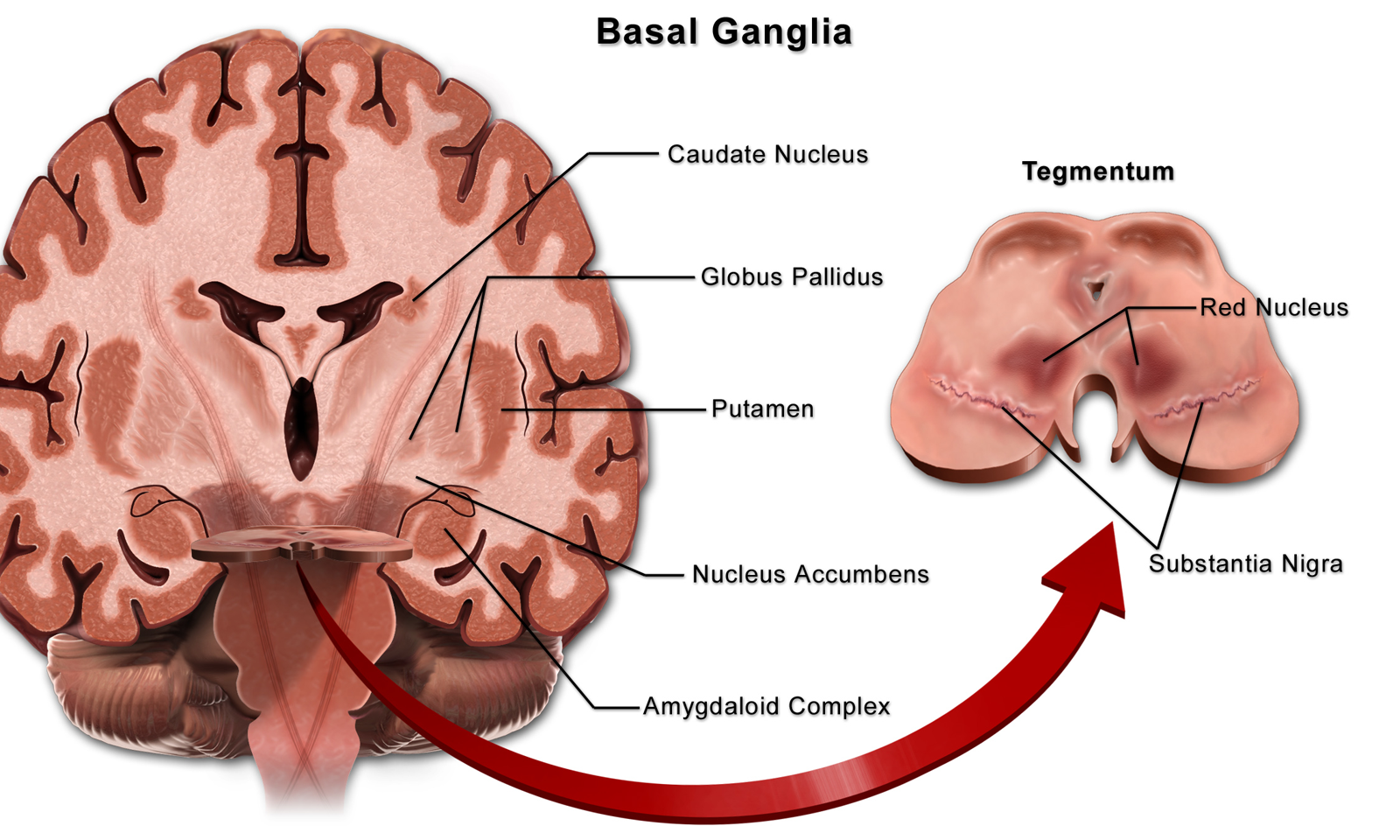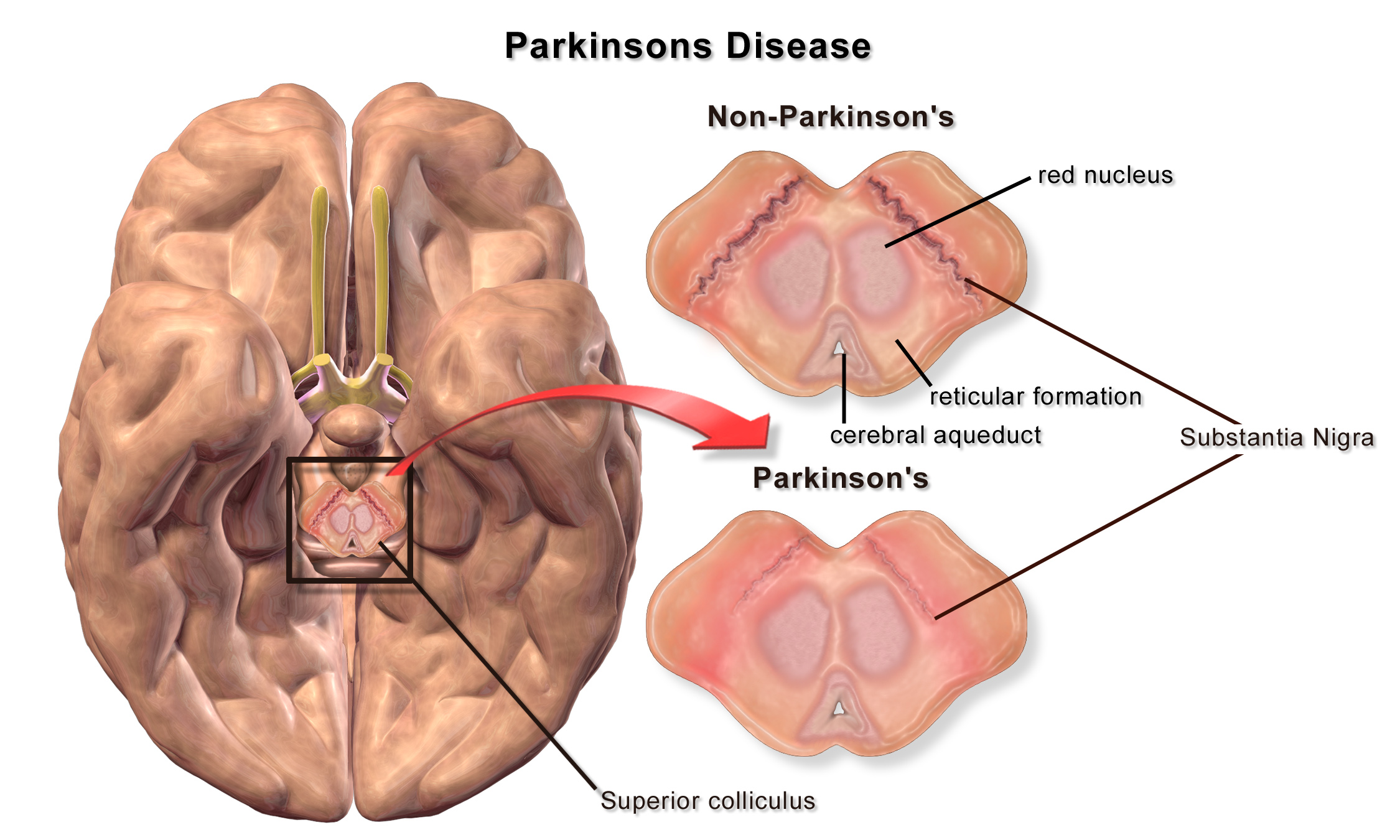The Basal Nuclei
Caleb Bevan
Objective 10: Explain the anatomy and function of the basal nuclei.
Upper Motor Neurons: Basal Nuclei Circuits

The basal nuclei (often incorrectly called the basal ganglia) are also involved in important motor circuitry. There are extensive motor loops connecting the prefrontal cortex as well as the premotor and supplementary motor cortices (area 6) to the caudate and putamen nuclei. The caudate and putamen, in turn, send their output via the globus pallidus (“pale globe”). The globus pallidus sends projections to the ventral anterior and ventral lateral thalamus, mentioned earlier in regard to cerebellar circuitry, and these thalamic nuclei project back to prefrontal cortex and area 6.

An important pathway into the caudate and putamen is from the substantia nigra (“black substance”), which provides dopamine to modify movement. These cells are lost in Parkinson disease, with tragic results.
Similarly, a structure called the subthalamic nucleus, which lies — you guessed it — underneath the thalamus at the top of the midbrain, also helps modify movement circuits in the basal nuclei. If the subthalamic nucleus is damaged, the debilitating condition hemiballismus results.
The most important function of the basal nuclei is the initiation and execution of movement. Current thinking is that the basal nuclei play a key role in action selection, choosing the “right” movement from the variety of choices the brain has, especially with regard to the emotional aspects of this choice: will the action result in reward or punishment? For example, asymmetry (left/right imbalance) in the activity of the caudate nuclei is associated with obsessive-compulsive disorder, and patients with Parkinson disease or Huntington disease have both movement disorders and emotional disturbances.
Media Attributions
- Basal Ganglia © Bruce Blausen is licensed under a CC BY (Attribution) license
- Parkinsons Disease © Bruce Blaus is licensed under a CC BY (Attribution) license

